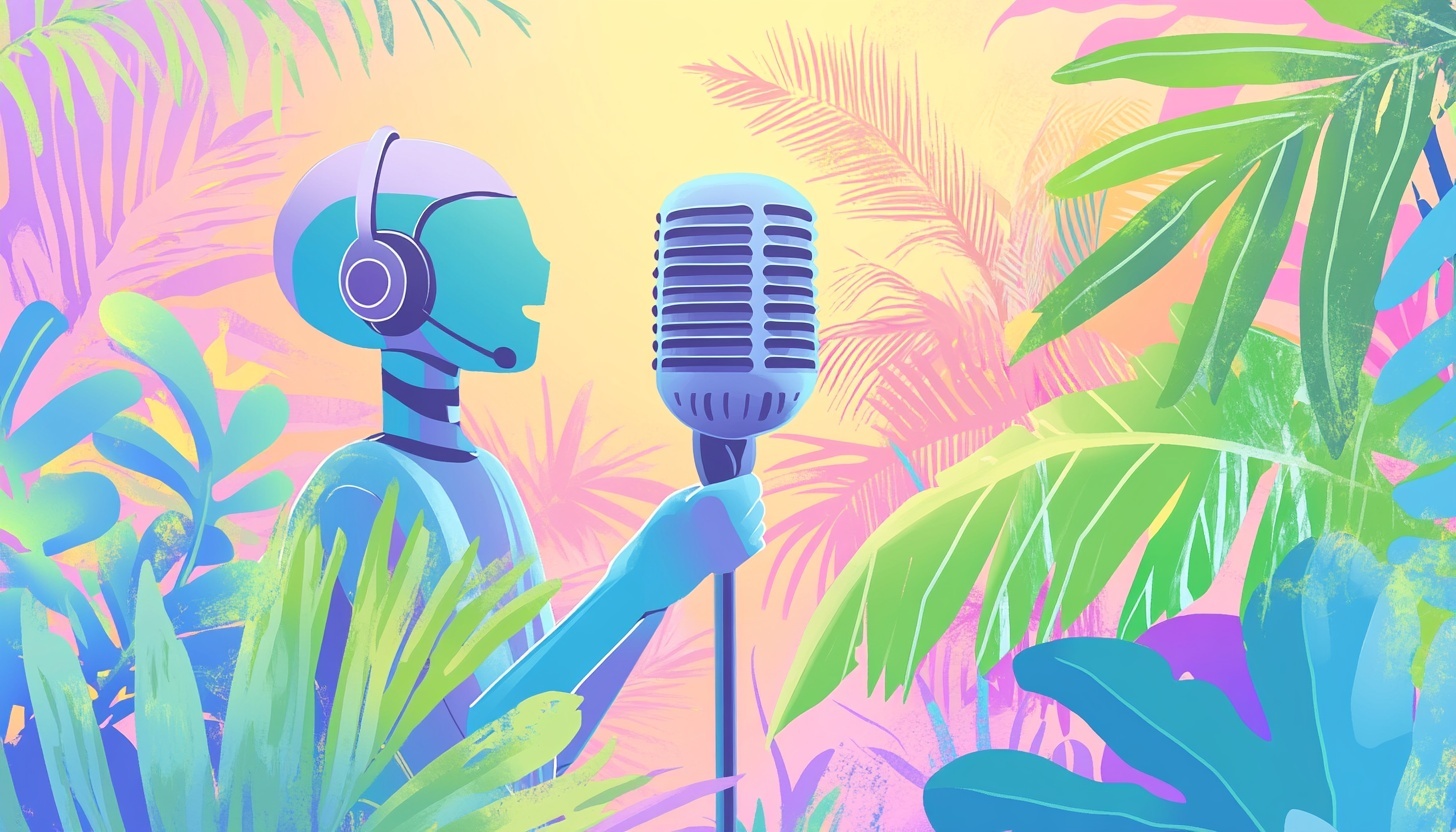The Beginner's Guide to How to Transcribe an Interview
Have you ever wondered how to turn a recorded interview into a readable, usable format? Transcribing interviews is an essential skill for researchers, journalists, and anyone who wants to capture important conversations in writing.
In this beginner's guide, we'll walk you through the process of transcribing an interview, from understanding the importance of transcription to choosing the right method and tools for the job. Whether you prefer to transcribe manually or use automated software, we'll provide tips and techniques to help you create an accurate, polished transcript that you can refer back to again and again.
Understanding Transcription
Transcription is the process of converting spoken words from an audio or video recording into written text. When it comes to interviews, transcription plays a crucial role in preserving the conversation in a readable format. Transcribing interviews allows researchers, journalists, and others to easily reference, analyze, and quote the content of the interview.
Transcripts of interviews serve multiple purposes in research and journalism. In research, interview transcripts provide a verbatim record of the conversation, enabling researchers to thoroughly examine the data, identify themes, and draw conclusions. Journalists often rely on interview transcripts to ensure accuracy when quoting sources and to provide a comprehensive record of the conversation for fact-checking and future reference.
There are two main methods for transcribing interviews: manual transcription and automated transcription. Manual transcription involves a person listening to the audio and typing out the contents word-for-word. Automated transcription, on the other hand, uses software or services that employ speech recognition technology to automatically convert the audio into text. Each method has its advantages and disadvantages, which we will explore in more detail later.
Steps in Transcribing an Interview
Before beginning the transcription process, it's essential to determine the best transcribing method based on your needs. Consider factors such as the length of the interview, the clarity of the audio, your typing speed, and the amount of time you have available. If you have a short interview with clear audio and you're a fast typist, manual transcription might be the way to go. However, if you have a lengthy interview or multiple interviews to transcribe, automated transcription could save you a significant amount of time.
Once you've chosen your transcription method, the next step is to convert the audio file into a written format. This process involves either manually typing out the contents of the interview or using transcription software to automatically generate a transcript. If you're transcribing manually, it's essential to create a comfortable setup with good headphones, a foot pedal (if available), and a word processor or transcription software.
To transcribe the interview effectively and efficiently, consider the following techniques:
1. Use a good pair of headphones to ensure you can hear the audio clearly.
2. Slow down the audio playback speed if needed to keep up with the conversation.
3. Use a foot pedal or hotkeys to control audio playback without removing your hands from the keyboard.
4. Create a consistent format for your transcript, including speaker labels and time stamps.
5. Take breaks as needed to avoid fatigue and maintain accuracy.
Manual Transcription
Manual transcription involves listening to the recorded interview and typing it out word-for-word. This method requires patience, focus, and good typing skills. To get started, open a word processor or transcription software, put on your headphones, and begin playing the audio. As you listen, type out each word spoken by the participants, including any filler words, false starts, and hesitations.
To improve your speed and accuracy during manual transcription, consider the following tips:
1. Develop a consistent typing rhythm and focus on maintaining it throughout the transcription process.
2. Use shorthand or abbreviations for common words or phrases to save time.
3. Utilize autocorrect and custom autocomplete settings in your word processor to automatically fix typos and quickly insert frequently used words or phrases.
4. Practice regularly to build up your typing speed and transcription stamina.
Automated Transcription
Automated transcription or AI transcription involves using software or services that employ speech recognition technology to convert spoken words into written text. These tools can significantly reduce the time and effort required to transcribe interviews, making them an attractive option for those with limited time or resources.
One of the best transcription software options on the market is Castmagic. Castmagic is an all-in-one platform that offers high-quality transcription services with speaker diarization in over 60 languages, including English, Spanish, French, German, and many more. The software supports various file formats, such as MP3, MP4, WAV, and even public YouTube videos.
Castmagic's automated transcription is fast and accurate, with most transcripts completed in around 15 minutes or less. Once your audio is transcribed, the platform provides a user-friendly interface for editing and refining your transcript. You can easily correct any errors, add speaker labels, and create a polished final product.
In addition to transcription, Castmagic offers a range of features to help you maximize the value of your content. The platform generates AI-powered content assets, such as show notes, summaries, blog posts, and social media content, saving you time and effort in repurposing your audio content.
Castmagic offers flexible pricing plans to suit various needs, from hobby podcasters to enterprise-level users. With its comprehensive features and excellent transcription accuracy, Castmagic is a top choice for anyone looking to streamline their interview transcription process and create engaging content.
The main advantage of using automated transcription services like Castmagic is the significant time savings compared to manual transcription. These tools can generate transcripts quickly, allowing you to access and review the content of your interview in a matter of minutes. However, it's essential to remember that even the best automated transcription is not perfect and may struggle with poor audio quality, heavy accents, or complex terminology. Always review and edit the transcript generated by these tools to ensure accuracy.
Also see - AI Rewriter: The Future Of Content Creation
Handling Difficult Sections of Audio when Creating a Transcription
When transcribing, it's important to handle difficult sections of the audio carefully. If you encounter a word or phrase that you can't understand, try the following tips:
1. Replay the difficult section several times to see if you can decipher the words.
2. Slow down the audio playback speed to better understand the speaker.
3. If you still can't understand the word or phrase, mark it as [inaudible] or [unclear] in the transcript.
4. If there's background noise or overlapping speech, note it in the transcript using brackets (e.g., [background noise] or [crosstalk]).
Proofreading and Finalizing the Transcript
Once you've completed the initial transcription, it's crucial to review and edit the text to ensure it accurately represents the content of the interview. Proofreading helps catch any errors, typos, or inconsistencies in the transcript, improving its overall quality and usability.
To ensure the accuracy of your transcript, consider the following tips:
1. Listen to the audio while reading along with the transcript to catch any missed words or phrases.
2. Check for consistency in speaker labels, time stamps, and formatting throughout the document.
3. Verify the spelling of names, places, and technical terms mentioned in the interview.
4. Read through the transcript without the audio to ensure it makes sense and flows well.
Proofreading Tools and Tips
In addition to manual proofreading, there are several software tools and techniques that can help ensure the accuracy and completeness of your transcript. Some useful proofreading tools include:
1. Grammarly: A writing assistant that checks for grammar, spelling, and punctuation errors.
2. Hemingway Editor: A tool that helps improve the readability and clarity of your writing by highlighting complex sentences, passive voice, and other issues.
3. Text-to-speech software: Tools like NaturalReader or Read&Write can read your transcript aloud, helping you catch errors or awkward phrasing.
To further ensure the accuracy and completeness of your transcription, consider the following methods:
1. Have a colleague or peer review the transcript for errors or inconsistencies.
2. Compare the transcript to any notes or summaries taken during the interview to ensure all key points are covered.
3. If possible, send the transcript to the interviewee for review and feedback to ensure accuracy and clarity.
Armed with these steps and techniques, you can create a polished, accurate transcript that effectively captures the content and nuances of the interview.
Related: Learn how to use AI in a marketing strategy.
Transform Your Interviews into Engaging Content with Castmagic
Transcribing interviews is a valuable skill that can help you capture and share important conversations with the world. By following the steps and techniques outlined in this guide, you'll be well on your way to creating accurate, polished transcripts that you can rely on for research, journalism, or any other purpose.
While manual transcription offers a high level of control and accuracy, it can be time-consuming and challenging, especially for longer interviews or those with poor audio quality. That's where automated transcription services like Castmagic come in.
With its advanced speech recognition technology, Castmagic makes it easy to transcribe your interviews quickly and accurately, regardless of the language or file format. And with its powerful AI-powered content creation tools, you can take your transcripts to the next level by generating engaging show notes, summaries, blog posts, and more.
Whether you're a researcher, journalist, podcaster, or content creator, Castmagic has the tools and features you need to streamline your workflow and maximize the impact of your interviews. So why wait? Sign up for a free trial of Castmagic today, and discover how easy it can be to unlock the full potential of your recorded conversations.
Start Repurposing Media with Castmagic
Paste a link from:









Place a link to 1 media file below and get 100+ content assets instantly.
Castmagic transforms your audio and video into blogs, social posts, newsletters, show notes, and more.
Start Repurposing Your Media

Click or drag your audio/video file here
One upload. Generate endless content.
1. Upload Media File: Drag and drop your audio or video file.
2. Get Instant Transcript: 99% accurate, perfectly formatted, speaker-labeled transcripts in 60+ languages.
3. Generate Content: Create publish-ready blogs, social posts, newsletters, and more with AI.

Automate Your Content Workflow with AI










